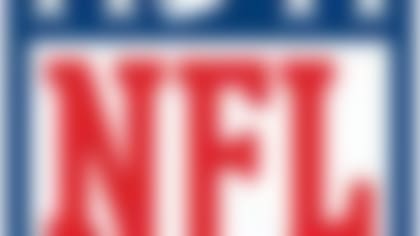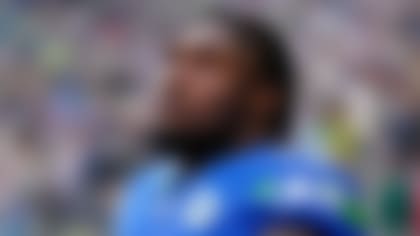NFL Media's Albert Breer touches on multiple topics in his robust Inside the NFL Notebook, including (click on each link to go directly to the topic):
» The key factor behind Seattle's league-best 11-1 record.
» One reason Nick Foles continues to dominate.
» Two college players on the scouting radar for Championship Saturday.
» And much more, beginning with an annual look at some emerging power brokers ...
Because there was turnover in seven general-manager positions and eight head-coaching spots in 2013, there figures to be a lot less movement in 2014. But there's another number that will loom even larger over the hiring cycle: zero.
That's how many of those 15 jobs went to minorities last year, a development that led the league to form the Career Development Advisory Panel to address the problem. And now, almost one year later, some power brokers within the NFL's personnel ranks are whispering that pressure has been turned up on clubs to avoid a repeat of January 2013.
As I set out to compile my fifth annual "Future GMs" list, it came up again and again with leaders in the personnel community, concerned there might be too much league involvement in the hiring process.
"The committee has a lot of pull, a lot of say with owners," one AFC personnel executive said. "It was such a sensitive year last year. Their recommendations are gonna go a long way with the owners, and there's gonna be a push if a job opens up to get a minority candidate in there. ... You have to let the owner make up his mind, but there will be a push."
An NFC general manager added, "I'm right there with them, I believe the pipeline is so important. But I don't want to force it. At the lower levels, yes. But don't force the placement of a hire at that level. It doesn't do the cause any good."
The panel itself is made up of eight men: Ernie Accorsi, Charley Casserly, Tony Dungy, Dennis Green, John Madden, Carl Peterson, Bill Polian and Ron Wolf. The man overseeing the group, NFL chief human resources officer Robert Gulliver, takes exception to the idea that clubs will face undue pressure to hire a minority.
"The purpose of the (panel) is to ensure that we add names, it's not meant to prescript anything to say, 'Here are the people you have to hire,' " Gulliver said Thursday. "That's not what we're trying to do. We're not trying to cram names down an owner's throat."
Instead, he continued, the idea is to supplement the work a search committee might do as a service to clubs, with the hope new names are introduced to decision-makers. Wolf and Polian helped teams with searches last year, so the group has experience with this. The panel met for a half-day before Thanksgiving, and Gulliver's had follow-up discussions with members as they finalize the list they'll give teams.
Either way, there's little question minority hires will be a hot-button topic in early January, and throughout the process. And it's with that backdrop that we present this year's list (in alphabetical order):
Chris Ballard, director of player personnel, Kansas City Chiefs: Kansas City GM John Dorsey plucked him from the Bears -- where he served as director of pro scouting -- just last year and might lose him quickly. Ballard's career started in coaching, and he has experience on both the pro and college sides of scouting. Whether it's now or in a couple years, he'll likely merit strong consideration soon.
Nick Caserio, director of player personnel, New England Patriots: He seamlessly took the reins from Scott Pioli as New England's personnel maven. Although he's considered to be a little introverted, Caserio's known to be principled and strong in his evaluations. League-wide perception, though, is that he's not going anywhere.
Eric DeCosta, assistant general manager, Baltimore Ravens: DeCosta was long considered the brightest prospect in the scouting ranks, which is why Baltimore owner Steve Bisciotti has gone to great lengths to ensure he'll keep the 42-year-old in town as GM Ozzie Newsome's eventual successor.
Tom Gamble, vice president of player personnel, Philadelphia Eagles: An NFL legend, Gamble returned home in the offseason after helping bring the 49ers back to prominence and then interviewing for the Jets' and Jags' GM openings. You'll have trouble finding anyone who doesn't like and respect Gamble. Given another shot to go through the process, his experience likely will earn him a gig.
Jason Licht, vice president of player personnel, Arizona Cardinals: Licht interviewed for the Jaguars' and Bears' GM openings last year, and Arizona's rise provides good reason to believe his time is coming. He worked for Andy Reid in Philly and Bill Belichick in New England, and has a sterling reputation as an evaluator.
Ryan Pace, director of player personnel, New Orleans Saints: Hidden beneath GM Mickey Loomis and coach Sean Payton, Pace is known as a good communicator and scout who has experience being on the road and in the office, though he does face some of the same questions as any candidate who's worked with a dominant head coach.
George Paton, assistant general manager, Minnesota Vikings: Paton came close to getting the job in St. Louis in 2012 and is considered the total package: smart, consistent, organized and communicative. The trouble for him is that Minnesota's on-field product has been so inconsistent.
Jimmy Raye, vice president of football operations, Indianapolis Colts: A few years back, it seemed a forgone conclusion that he'd get his shot, but Raye's star dimmed with the Chargers' decline, and he was passed over by the organization last year. Still, Raye (a minority candidate) remains one of the most respected voices in the scouting community and has the personality to lead a department.
Duke Tobin, director of player personnel, Cincinnati Bengals: The son of long-time personnel man Bill Tobin, Duke has made his mark in helping to build the Bengals into one of the NFL's most talented teams. A little reserved, but steady and principled, he probably has gone as far as he's going to in the Bengals' owner-centric structure.
Harrison: Week 14 Game Picks
Elliot Harrison provides his predictions for the entire Week 14 slate, including three key bouts with major playoff implications. **READ**
Lionel Vital, director of player personnel, Atlanta Falcons: Vital has the pedigree, having worked for Belichick and Newsome. He has the reputation as a talent guy. Also, he's a minority, follows in the lineage of Les Snead and Dave Caldwell under Thomas Dimitroff, and is a straight shooter with strong people skills. What's working against him? The Falcons' tough go of it in 2013.
Additional risers: Blake Beddingfield, director of college scouting, Tennessee Titans; Ran Carthon, director of player personnel, St. Louis Rams; Scott Cohen, senior personnel advisor, Tampa Bay Buccaneers; Lake Dawson, vice president of player personnel, Tennessee Titans; Ray Farmer, assistant general manager, Cleveland Browns; Scott Fitterer, director of college scouting, Seattle Seahawks; Brian Gardner, director of pro personnel, Houston Texans; Brian Gutekunst, director of college scouting, Green Bay Packers; Joe Hortiz, director of college scouting, Baltimore Ravens; Will McClay, assistant director of player personnel, Dallas Cowboys; Lance Newmark, assistant director of college scouting, Detroit Lions; Vince Newsome, director of pro personnel, Baltimore Ravens; Jon Robinson, director of college scouting, New England Patriots; Marc Ross, vice president of player evaluation, New York Giants; Eliot Wolf, director pro personnel, Green Bay Packers; JoJo Wooden, director of player personnel, San Diego Chargers.
The secret to Seattle's success
The Seahawks dominated the Saints on Monday night without Brandon Browner (groin injury and pending suspension) and Walter Thurmond (suspension) -- their second- and third-best corners, respectively -- in a similar fashion to how they rolled in the absence of pass rushers Bruce Irvin (suspension) and Chris Clemons (ACL rehab) at the start of the season.
In both instances, the key was simple: depth.
Byron Maxwell, a sixth-round draft pick in 2011, played 57 of the team's 60 defensive snaps Monday, equal to the workload of All-Pro Richard Sherman, who was a 2011 fifth-rounder. Jeremy Lane, a sixth-round pick in 2012, played 32 snaps, which equates to just over one half. And Drew Brees and Co. scored just seven points.
"I don't feel like we do anything different than anyone else," Seahawks GM John Schneider said Wednesday afternoon. "We just take a real aggressive approach to acquisition. We're not gonna ignore opportunities. That doesn't mean every one of them will work out all the time. But we're not gonna ignore things."
There's a reason why the Schneider-Pete Carroll marriage has worked within that approach. In Green Bay, Schneider had the reputation for being an idea guy similar to some of his mentors, such as Ron Wolf (who used to staff NBA predraft camps in search of cornerbacks and tight ends). At USC, Carroll assembled a staff full of teachers and built a roster that had competition at every spot, providing players with the resources and motivation to develop.
J.R. Sweezy -- a 2012 seventh-rounder who the Seahawks converted from a defensive lineman to their starting right guard -- is one perfect example of marrying outside-the-box thinking with teaching. So too is Lemuel Jeanpierre, another college defensive lineman who switched sides of the ball and filled in for Max Unger at center when the All-Pro was hurt.
Brandt: Handicapping the MVP race
Browner, on the other hand, never switched positions. But director of team operations Tag Ribary was adamant about nabbing him from the CFL in 2010, pushing to ensure Seattle was Browner's first NFL visit.
Then there are the player-for-player trades. Carroll and Schneider saw a fit in the defense for Clemons back in 2010, and Clemons was making too much money for what he was doing in Philly. Consequently, Schneider and Andy Reid worked out a deal that sent Darryl Tapp (less of a fit for Carroll's philosophy) to the Eagles. The following year, with the Seahawks' depth at corner improving, they dealt Kelly Jennings to the Cincinnati Bengals for Clinton McDonald, who's been solid on Seattle's interior D-line.
Ultimately, what you see is a team that feels injuries (like all the rest), but is pretty well-equipped to absorb them -- an enormous reason for their 11-1 record ahead of Sunday's showdown in San Francisco.
"A huge part of it is having no walls with our coaching staff," Schneider said. "We have an approach with this staff -- from Coach Carroll on down -- of taking care of the players, being willing to ride it out and teach and develop and play with young people. For us, that's a huge advantage in recognizing talent and fits."
Cam's evolution in Carolina
Carolina Panthers offensive coordinator Mike Shula wasn't shy when describing his feelings toward Cam Newton.
"He's my favorite guy to coach. My favorite guy I've ever coached," Shula said Wednesday morning from his office. "He's so fun. He's full of life, full of energy. He's got a great personality, and yet, you can coach him. He has no ego about that. You can get on him, and he understands you're trying to make him better.
"It's a work in progress, and we're right in the middle of it. But he's helped give us the chance to get to December with meaningful games ahead."
Newton's numbers haven't exploded in Year 3. He's three touchdown passes away from setting a new career-high and has posted his best quarterback rating, but his total yards and yards per attempt are down slightly from his first couple seasons.
You have to check figures that really count -- wins and losses -- to see the improvement. At 9-3, the Panthers are right on pace to match Carolina's 1996 and 2008 editions for most regular-season wins in franchise history (12). But the key to Cam's success started late last season and continued with a resulting decision made by the organization in the months that followed.
The Carolina coaches saw growth from Newton in late November and through December 2012 that manifested in his demeanor, in learning to manage his emotions better and in more consistent play. He did this, as Shula puts it, by "not feeling you have to win the game on that individual play." It wasn't a matter of being more conservative, but rather being willing to wait for the big play.
The quarterback's progress convinced Ron Rivera to promote Shula from QB coach to coordinator, after Rob Chudzinski landed the head-coaching gig in Cleveland, rather than select a well-regarded outside candidate like Pat Shurmur or Hue Jackson, who both interviewed. The decision gave Newton some continuity.
Shula went through the playbook in the spring, identifying some things the quarterback wasn't doing well and asking for improvement, while streamlining other concepts.
"I love this offense, love the way Chud presented it, but it's a ton of stuff," Shula said. "Our No. 1 goal was to get Cam to play fast, to think fast, make good decisions and feel good about what he's doing. So we'd take one thing, say we're keeping this and we're gonna work hard on it, and then something else, and you don't throw anything out, but say, 'Let's not focus on this as much.' "
Shula says Newton's progress probably shines brightest in practice, but also in how he handles interceptions -- something that was apparent in his demeanor late in 2012, and, most notably, in recent late-game situations against the 49ers, Patriots and Dolphins. The coordinator says Newton's "really good" football insight has sped up his development.
Of course, Newton isn't where he or his coaches want him to be. But the progress is undeniable, even if it isn't flatly illustrated in the numbers.
"He hasn't hit his ceiling," Shula said. "The biggest part, the No. 1 part for him, is to keep improving in consistently making good decisions and reacting in a positive way. We see different things every week, so it's continuing to understand our offense to the point where he can react even quicker. That's the goal for any young guy. But with Cam, the fundamental thing is he's extremely talented throwing it and, of course, when he needs to, running it."
Four downs
Silver: Believe the hype in Philly

1) Nick Foles' bye-week plan adds up. Over the course of the season, we've seen a cavalcade of young quarterbacks hit a wall. In some cases, it's resulted from teams building a book on these players, with mounting film available on their strengths and weakness. Foles tried to get ahead of that during his bye in Week 12. The Eagles sophomore did it, in large part, because of past experience. "I remember when I started playing in college (at Arizona), my first couple games, I was lighting it up pretty good, and then all of the sudden all this different stuff was coming, and then I realized, 'Man, this is totally different,' " Foles said. "And the NFL's an even bigger animal. That's what I expect. It's a tough stage, and the more film they have, the more opportunities they have to study you and see what you do well, and see where they can hurt you." So the idea, for Foles, was to try and anticipate how defenses would attack him, based on the weaknesses he was showing on tape. That second adjustment -- the ability to counterpunch, something we hit on a couple weeks back -- is always a difficult one for young quarterbacks. And the process serves as a reminder that instant success is a lot easier to achieve than sustained excellence.
2) Another first in the NFL's London effort. Earlier this year, due to an unexpected scheduling conflict with the Oakland A's, the NFL moved a Chargers-Raiders game back seven hours to create a Pacific Time Zone prime-time game for the first time. Next year, by design, we'll have our first 9:30 a.m. ET kickoff, for the Oct. 26 Lions-Falcons game at London's Wembley Stadium. My first instinct was to think it'd be a test balloon for a potential future London team, but I've been told there were more immediate concerns driving the decision. First, the NFL wanted to give a "day game" experience to the crowd in the U.K. -- a 1 p.m. ET game is early evening there -- that most of the U.S. gets every Sunday. Second, the league figured it would allow fans to travel to and from other parts of the U.K. without having to stay a night, which could broaden its reach in selling tickets. And third, the hope is that, with the game in the afternoon -- which is when the British are accustomed to watching their weekend sports -- it'll draw better viewership and coverage from the press. There are ancillary benefits, as well. For teams, it opens up the possibility of traveling home right after the game, rather than staying an extra night. (Heathrow Airport has restrictions on certain aircrafts departing after 11 p.m. local time.) And for the league, it'll allow the London game to have a standalone start time, which makes it easy to showcase the International Series in the U.S. Depending on the game's success, it wouldn't be wholly surprising to see all the Wembley games kicking off while Americans are eating breakfast.
The playoff picture

How would your team's prospects look if the season ended today? See where each team stands in the playoff picture midway through the season. **More ...**
3) Miami refuses to go down without a fight. Given the controversy that enveloped the franchise in late October, it would've been easy to guess Miami would spend November and December slowly circling the drain on a death march to pink slips. That they're 6-6 and in playoff contention -- winning three of five since the lunch-room fiasco -- certainly says something about the makeup of the team. One Dolphins source opined that it "reflects a level of leadership," which is pretty interesting given the scrutiny on that characteristic of the club through the whole Jonathan Martin-Richie Incognito situation. In particular, Ryan Tannehill, Brian Hartline, Cameron Wake and Brent Grimes have been more vocal, and Mike Wallace has stepped up to a degree, as well, according to folks in Miami. Will it be enough to save jobs? After what owner Stephen Ross has endured, a playoff berth might be needed for that. But at the very least, the team's success is a credit to coach Joe Philbin and a handful of the players.
4) Jacksonville isn't playing out the string, either. The easy way to poke at Jacksonville right now is to say the rebuilding club's recent surge is screwing up its draft pick. After all, the Jags have won four of five, and that won't help in May. And yes, the Jags get the joke. But internally, they're OK with the way this is going, for a few reasons: 1) There's no Andrew Luck in the upcoming draft class; 2) fixing the culture is more important than the addition of a single player, and the positive reinforcement the young players are receiving now is invaluable in that quest; 3) this all marks the development of a draft class that GM Dave Caldwell and coach Gus Bradley hope can be a bedrock in their rebuilding effort. No. 1 overall pick Luke Joeckel, of course, is out for the season with a broken ankle. But safety John Cyprien and slot receiver Ace Sanders have really come on of late, corner Dwayne Gratz is improving, and the team continues to harbor high hopes for Denard Robinson, as he works out a role. So no matter how the rest of the Jags' season plays out, or where they'll be drafting come spring, there's plenty of reason to believe the new regime has the arrow pointing in the right direction.
Three checkdowns
1) New deals for Texas A&M's Kevin Sumlin and Baylor's Art Briles, plus Steve Sarkisian's move from Washington to USC, presumably takes three college names out of contention for NFL gigs -- for now. Meanwhile, it's fair to expect Penn State's Bill O'Brien and Stanford's David Shaw to receive phone calls.
2) Why would the NFL come down on the Pittsburgh Steelers for coach Mike Tomlin's actions? Easy: to set a precedent. Threatening to punish the organization -- by possibly docking it a draft pick -- sends the implicit message that clubs are responsible for oversight.
3) Count me among those who think the Bills' issues in Toronto don't indicate much in terms of the city's viability as an NFL market. The club is distinctly Buffalo's, that brand is established, and it'd be tough to figure out how Toronto would support a team without giving it one.
Two college players to watch Saturday
1) Michigan State CB Darqueze Dennard (vs. Ohio State, 8:17 p.m. ET, FOX): Dennard is the best player on one of the nation's top defenses and is now regarded as one of the premier senior corners in college football, in the mix with Oklahoma State's Justin Gilbert and Virginia Tech's Kyle Fuller. The Spartan already has played himself into the first round of May's draft, and Saturday gives him another chance to rise; the matchup with the Buckeye offense will be the proverbial "first tape to pop in" for scouts in the spring. "He's fast, he doesn't get beat, (and is) a tough, sound tackler -- just a good all-around player," an AFC college scouting director said. "And this is the chance to show up against a high-powered offense in both coverage and run support." It's not the only individual matchup within the Spartan-defense-vs.-Buckeye-offense showdown to keep an eye on. Two more: Ohio State RB Carlos Hyde vs. Michigan State MLB Max Bullough, and Ohio State LT Jack Mewhort vs. Michigan State DE Shilique Calhoun.
2) Auburn DE Dee Ford (vs. Missouri, 4 p.m. ET, CBS): Some of the bigger names in this one, like Missouri stud WR Dorial Green-Beckham, aren't draft-eligible, so this might be as quiet an SEC title game, from a prospect standpoint, as we've had in a long time. That said, the smaller, quick-twitch Ford has a chance to really help himself by proving he can close quickly on the quarterback in a fast-paced spread offense. "He's a niche player at the next level, an undersized pass rush-type that's still developing as a run defender," an AFC area scout said. "And that limits him in where he can go, and who drafts him. And he has injury history. But he's more explosive off the ball than (former Auburn DE Corey) Lemonier, who went to the Niners. I really like his burst, his explosiveness, and he'll need to get better refining his technique and pass-rush moves. He wins now with speed." The aforementioned AFC college scouting director called the Missouri game "a big moment" for Ford, since this is when he should be at his healthiest, having spent much of the year healing a preseason knee injury.
Extra point
The ACL injuries to LSU's Zach Mettenberger and Georgia's Aaron Murray, and Marcus Mariota's decision to return to Oregon for his redshirt junior season, bring into focus the fact that teams looking for quarterbacks this offseason might struggle to find slam-dunk solutions.
In addition, teams are wary of repeating the mistake a number of clubs made in the 2011 draft: reaching for a QB. That year, Jake Locker, Blaine Gabbert and Christian Ponder were among the top 15 overall picks. Also in the top 15: Von Miller, Marcell Dareus, A.J. Green, Patrick Peterson, Julio Jones, Aldon Smith, Tyron Smith, J.J. Watt, Nick Fairley, Robert Quinn and Mike Pouncey.
This year's quarterback group promises to have fantastic depth, but no super blue-chip, Andrew Luck-type prospect. And as turned out to be the case two years ago, the expectation is that the top 20 to 25 picks will be positively loaded at other positions. Evaluators have seen this coming for a while. It's why clubs tried to trade out of last year's draft -- you can see it in this year's so-so rookie class -- and into 2014.
So teams with a high pick and a need at quarterback will have big decisions to make.
Will Cleveland tread water and see what it has in Brian Hoyer? Will Oakland try and Scotch-tape things together for 2014 with Matt McGloin and Terrelle Pryor? Will Tampa Bay give Mike Glennon another year?
Those fascinating, high-impact decisions are on tap for early next year.
Follow Albert Breer on Twitter @AlbertBreer.




